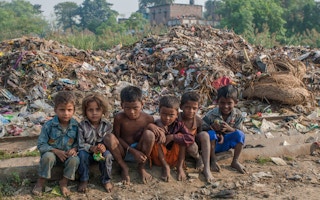The cost of adapting to a changing climate will be 4-5 times higher than what was estimated two years ago, says a new report by the United Nations Environment Programme (UNEP). “The costs of adaptation could range from USD140 billion to USD300 billion by 2030, and between USD280 billion and USD500 billion by 2050,” the report says.
As India faces more intense and more frequent heat waves, the report says, “Annual costs associated with additional demand for cooling (in India) could range between USD25 billion and USD100 billion by mid-century, for low- and high-warming scenarios, respectively.” Recent studies have linked increasing heat waves in India to climate change.
The Intergovernmental Panel on Climate Change (IPCC) in its fifth assessment report released in 2014 and 2015 had estimated that the costs of adaptation would be between USD70 billion and USD100 billion by 2030. However, the IPCC had warned that it had “low confidence” in its estimate due to “methodological challenges and data shortcomings”.
UNEP had released its first adaptation finance report in 2014 and has been doing it every year since then. “It’s hard to estimate adaptation finance as it depends on methodology used and the assumptions made. However, this can guide us on where should we move towards and explore possibilities to bring money to bridge the gap,” Barney Dickson, director of programmes at UNEP World Conservation Monitoring Centre said while releasing the new report during the May 10-13 Adaptation Futures conference in Rotterdam, The Netherlands.
“
It’s encouraging that the amount has increased in the last few years but it is far clearer that the world is too behind to help out poor and the most vulnerable communities, especially in least developed countries.
Saleemul Haq, director, International Centre for Climate Change and Development
The report claims the present estimate is more robust than in 2014. “It includes a more in-depth review of national-level cost estimates (bottom-up studies), and global-level, sector specific estimates, while providing additional global-level model estimates (top-down estimates),”said Anne Olhoff of UNEP.
Commenting on the new UNEP report, Saleemul Haq, Director of Dhaka-based International Centre for Climate Change and Development (ICCAD), told thethirdpole.net, “It’s encouraging that the amount has increased in the last few years but it is far clearer that the world is too behind to help out poor and the most vulnerable communities, especially in least developed countries.”
At the climate summit in Paris last December, it was decided that the Green Climate Fund (GCF) — designated to provide finance to deal with climate change — would share its budget equally between mitigation and adaptation projects.
Four of the eight projects approved by GCF during the Paris summit were for adaptation. But the GCF meeting held after the summit failed to start any further project. Anyway, GCF has just about USD10 billion in its kitty now.
In 2009, world leaders gathered for the climate summit in Copenhagen had promised to provide USD100 billion per year from 2020 to support developing countries to mitigate climate change and adapt to its effects.
However there is a huge gap between the funds pledged and provided. “There is certainly a worry that commitments made by the developed countries are not being translated into reality which is not fair but whatever has been received should be used wisely,” added Haq.
The Organisation for Economic Cooperation and Development (OECD) made an assessment last year that climate finance flow from developed to developing countries amounted to an annual average of USD57 billion between 2013 and 2014. The assessment was hotly contested by most developing countries. Even that assessment admits only USD9.3 billion was directed to adaptation related activities.
Still, as soon as the money has started to flow, concerns about its effective use are being expressed. Olhoff said, “It must be noted that finance is a means rather than an end. Availability of funds does not guarantee that they are used efficiently and effectively to increase climate resilience and reduce vulnerability.”
Talking about the situation in Nepal, Madhav Giri, Research Fellow at UNEP’s Global Programme of Research on Climate Change Vulnerability, Impacts and Adaptation (PROVIA), said, “Mountainous countries are among the most vulnerable, but they are struggling to get funds to implement their adaptation projects.”

















